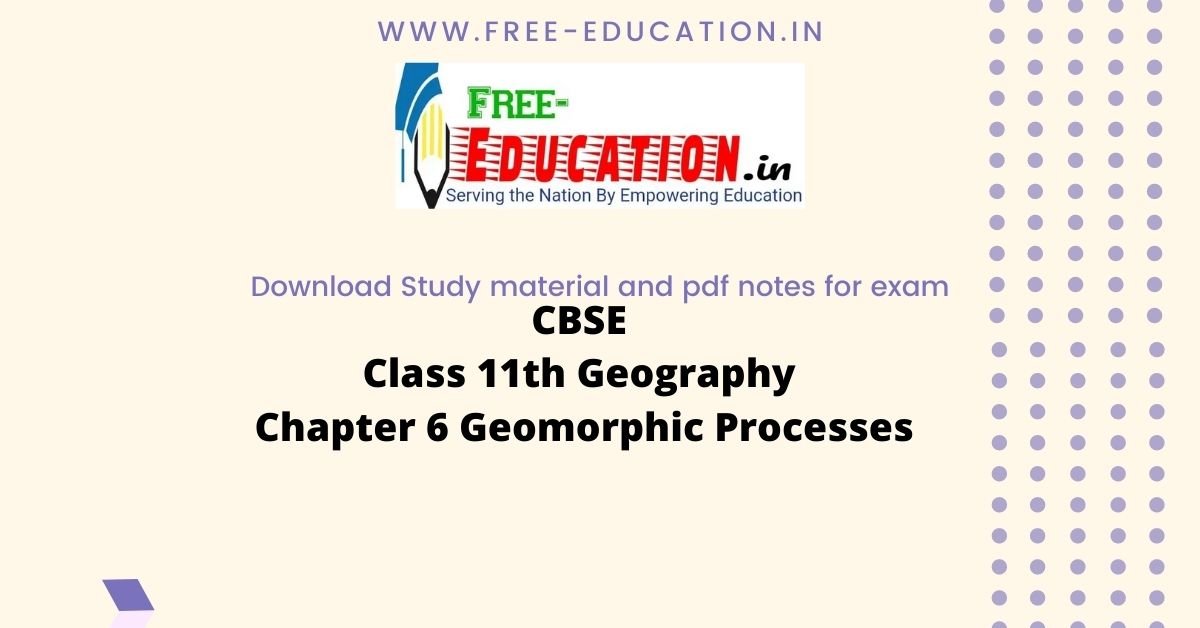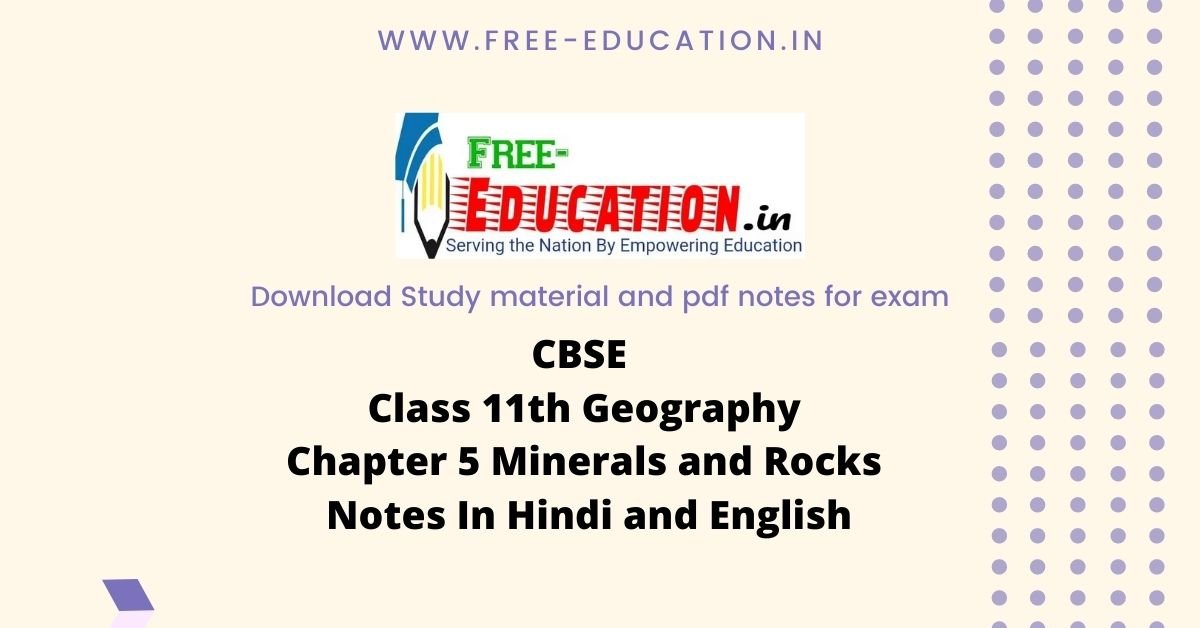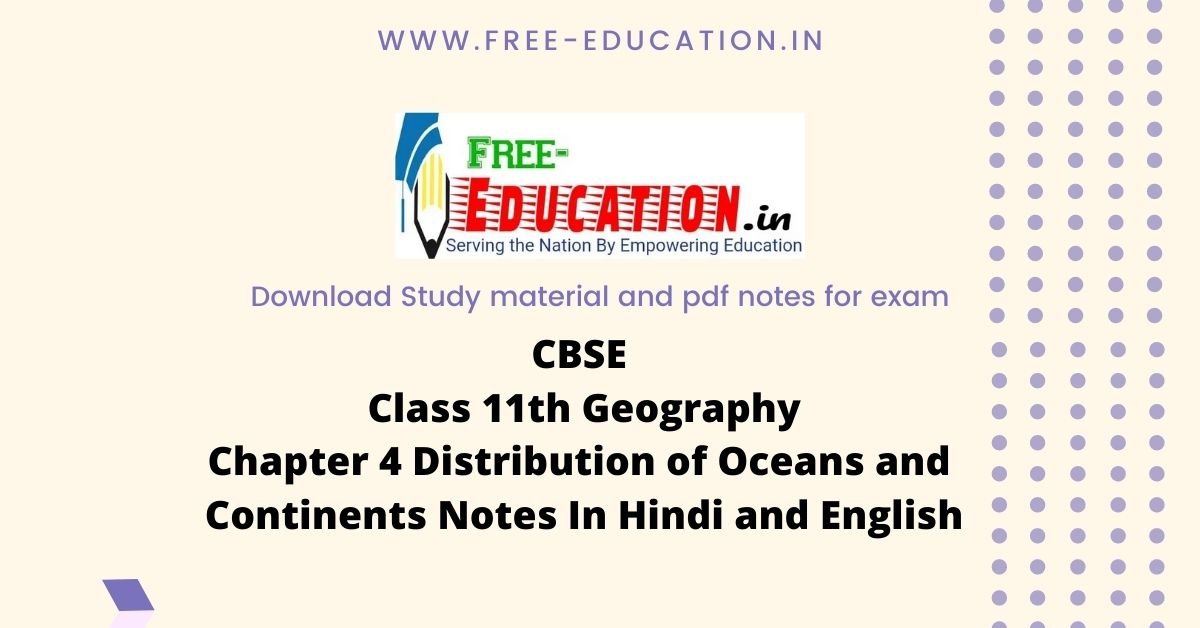Class 11 Geography NCERT Solutions Chapter 1 Geography as a Discipline
1. Multiple choice questions
Question 1(i).
Which one of the following scholars coined the term ‘Geography’?
(a) Herodotus
(b) Erathosthenese
(c) Galileo
(d) Aristotle.
Answer:
(b) Erathosthenese
Question 1(ii).
Which one of the following features can be termed as ‘physical feature’?
(a) Port
(b) Road
(c) Plain
(d) Water park.
Answer:
(c) Plain
Question 1(iii).
Make correct pairs from the following two columns and mark the correct option.
| 1. Meteorology | A. Population Geography |
| 2. Demography | B. Soil Geography |
| 3. Sociology | C. Climatology |
| 4. Pedology | D. Social Geography |
(a) 1B’2C,3A,4D
(b) 1A,2D,3B,4C
(c) 1D,2B,3C,4A
(d) 1C,2A,3D,4B.
Answer:
(d) 1C.2A,3D,4B
Question 1(iv).
Which one of the following questions is related to cause-effect relationship?
(a) Why
(b) Where
(c) What
(d) When.
Answer:
(a) Why
Question 1(v).
Which one of the following disciplines attempts temporal synthesis?
(a) Sociology
(b) Geography
(c) Anthropology
(d) History.
Answer:
(a) History.
2. Answer the following questions in about 30 words.
Question 2(i).
What important cultural features do you observe while going to school? Are they similar or dissimilar? Should they be included in the study of geography or not? If yes, why?
Answer:
When we go to school we see shops, theatres, roads, temple, mosque, church, houses, government offices, etc on the way. These represent cultural features. All of these features are dissimilar.
Yes, these must be included in the study of geography as they play an important role in understanding human geography. They are an inseparable part of social and cultural geography.
Question 2(ii).
You have seen a tennis ball, a cricket ball, an orange and a pumpkin. Which one amongst these resembles the shape of the earth? Why have you chosen this particular item to describe the shape of the earth?
Answer:
We have seen tennis ball, a cricket ball, an orange and a pumpkin. Amongst them an orange resembles the shape of the earth the most because tennis ball and cricket ball are almost circles or spheres and pumpkin is comparatively longer. But earth is geoid type flatter towards poles which is like an orange.
Question 2(iii).
Do you celebrate Van Mahotsava in your school? Why do we plant so many trees? How do the trees maintain ecological balance?
Answer:
Yes, we celebrate Van Mahotsava in our school. We plant many trees on this occasion because trees provide us oxygen, food, rubber, paper, medicinal herbs and uncountable life-giving things. Plants take in carbon dioxide and give oxygen and in this way they maintain ecological balance.
Question 2(iv).
You have seen elephants, deer, earthworms, trees and grasses. Where do they live or grow? What is the name given to this sphere? Can you describe some of the important features of this sphere?
Answer:
We have seen elephants, deer, earthworms, trees and grasses. They live and grow on the biosphere. Important features of biosphere are as follows:
- The combined form of land sphere, hydrosphere and atmosphere where life is possible is called biosphere.
- Plants and animals are biotic elements of biosphere while soil, water, air, etc are abiotic elements.
- Both moving and non-moving living beings are seen on the biosphere. Moving living beings include animals, insects, birdsr aquatic animals, human beings, etc while non-moving beings include trees, plants, grass, etc.
Question 2(v).
How much time do you take to reach your school from your house? Had the school been located across the road from your house, how much time would you have taken to reach school? What is the effect of the distance between your residence and the school on the time taken in commuting? Can you convert time into space and vice versa?
Answer:
It takes me around one hour to reach my school. Had my school been located across the road from my house, I could reach there within two minutes. Due to long distance between my residence and school a lot of time gets wasted in commuting. It affects my studies as lesser time is left for studies.
Space can be converted into time as we say that so and place is at 45 minutes distance from here but time cannot be converted into space.
3. Answer the following questions in about 150 words.
Question 3(i).
You observe every day in your surroundings that there is variation in natural as well as cultural phenomena. All the trees are not of the same variety. All the birds and animals you see, are different. All these different elements are found on the earth. Can you now argue that geography is the study of “areal differentiation”?
Answer:
We observe every day in our surroundings that there is variation in natural as well as cultural phenomena. All the trees are not of the same variety. All the birds and animals we see, are different. All these different elements are found on the earth. It is right to say that Geography is the study of “areal differentiation” but it will be absolutely wrong to say that geography is the study of only “areal differentiation.”
Geography as a discipline is related to space and takes note of spatial characteristics and attributes. It studies the patterns of distribution, location and concentration of phenomena over space and interprets them providing explanations for these patterns. It takes note of the associations and inter- relationships between the phenomena over space and interprets them providing explanations for these patterns. It also takes note of the associations and inter-relationships between the phenomena resulting from the dynamic interaction between human beings and their physical environment. Geography helps in understanding the reality in totality in its spatial perspective. Geography, thus, not only takes note of the differences in the phenomena from place to place but integrates them holistically which may be different at other places.
Question 3(ii).
You have already studied geography, history, civics and economics as parts of social studies. Attempt an integration of these disciplines highlighting their interface.
Answer:
Geography is an integrated discipline.
1. Geography and History: The geographical factors have modified the course of history in different parts of the world. Every geographical phenomenon undergoes change through time and can be explained temporarily. The changes in landforms, climate, vegetation, economic activities, occupations and cultural developments have followed a definite historical course.
2.Geography and Civics: The core concern of political science is territory, people and sovereignty while political geography is also interested in the study of the state as a spatial unit as well as people and their political behaviour.
3. Geography and Economics: Economics deals with basic attributes of the economy such as production, distribution, exchange and consumption. Each of these attributes also has spatial aspects and here comes the role of economic geography to study the spatial aspects of production, distribution, exchange and consumption.
Project Work
Select forest as a natural resource.
(i) Prepare a map of India showing the distribution of different types of forests.
(ii) Write about the economic importance of forests for the country.
(iii) Prepare a historical account of conservation of forests in India with focus on Chipko movements in Rajasthan and Uttaranchal.
Answer:
(ii) Forests are very important for the economy of a country.
- Forests provide shelter to wild animals.
- We get wood from forests.
- We get paper, grass, bamboo, medicinal herbs, rubber, tea, coffee, food items, fodder from animals, etc from trees.
- Trees play an important role in preventing soil erosion.
(iii) Attempt yourself.
Class 11 Geography Chapter 1 NCERT Extra Questions
Class 11 Geography Chapter 1 Multiple Choice Questions
Question 1.
We study under physical geography:
(a) Weather, soil, atmosphere, etc.
(b) Agriculture
(c) Population, Industry
(d) Urban and rural settlement.
Answer:
(a) Weather, soil, atmosphere, etc.
Question 2.
Which of the following is not studied under economic geography?
(a) Agriculture
(b) Industry
(c) Transport
(d) Population.
Answer:
(d) Population
Question 3.
Which of the following is not a sub-branch of Biogeography?
(a) Zoo Geography
(b) Plant Geography
(c) Human Geography
(d) Climate Geography.
Answer:
(d) Climate Geography
Question 4.
Geography is concerned with the description and explanation of the areal differentiation of the earth’s surface. Who said it?
(a) Herodotus
(b) Erathosthenese
(c) Richarde Hartshorne
(d) Galileo.
Answer:
(c) Richard Hartshome
Question 5.
Geography studies the differences of phenomena usually related in different parts of the earth’s surface. Who gave this definition?
(a) Hambolt
(b) Ratzel
(c) Kumari Sample
(d) Alfred Hartner.
Answer:
(d) Alfred Hertner
Question 6.
Which of the following is not studied under population geography?
(a) Sex Ratio
(b) Migration and Occupational Structure
(c) Pollution
(d) Population Density.
Answer:
(c) Pollution
Question 7.
Who developed systematic geography?
(a) Hambolt
(b) Karl Ritter
(c) Kumari Sample
(d) Alfred Hartner.
Answer:
(a) Hambolt
Question 8.
Who developed regional geography?
(a) Hambolt
(b) Karl Ritter
(c) Kumari Sample
(d) Alfred Hartner.
Answer:
(b) Karl Ritter
Question 9.
Under which approach is the world divided into regions at different hierarchical levels and then all the geographical phenomena in a particular region are studied.
(a) Systematic Approach
(b) Physical Approach
(c) Dualism Approach
(d) Regional Approach.
Answer:
(d) Regional Approach
Question 10.
Under which approach, a phenomenon is studied world over as a whole, and then the identification of typologies or spatial patterns is done?
(a) Systematic Approach
(b) Physical Approach
(c) Dualism Approach
(d)Regional Approach
Answer:
(a) Systematic Approach.
Class 11 Geography Chapter 1 Very Short Answer Type Questions
Question 1.
What are different approaches to the study of geography?
Answer:
The major approaches to study geography have been
- Systematic and
- Regional.
Question 2.
Who introduced Systematic Approach?
Answer:
The systematic geography was introduced by Alexander Von Humboldt, a German geographer (1769-1859).
Question 3.
Who was the profounder of Regional Geography?
Answer:
Regional geography approach was developed by another German geographer and a contemporary of Humboldt, Karl Ritter (1779-1859).’
Question 4.
Define Geography.
Answer:
The term geography was first coined by Eratosthenese, a Greek scholar (276¬194 BC.). The word has been derived from two Greek words geo (earth) and graphos (description). Put together, they mean description of the earth. The earth has always been seen as the abode of human beings and thus, scholars defined geography as, “the description of the earth as the abode of human beings”.
Question 5.
What is studied under Environment Geography?
Answer:
It is concerned with environmental problems such as land gradation, pollution and environment conservation.
Question 6.
What is studied under Biogeography?
Answer:
It has emerged as a result of the interface between physical geography and human geography. It has three branches: Plant Geography. Zoo Geography and Ecology.
Question 7.
What is studied under Geomorphology?
Answer:
It is concerned with the study of landforms, their evolution and related processes.
Question 8.
What is studied under Hydrology?
Answer:
It studies the realm of water over the surface of the earth including oceans, lakes, rivers and other water bodies and its effect on different fife forms including human life and their activities.
Question 9.
What are main branches of Biogeography?
Answer:
It has three branches: Plant Geography, Zoo Geography and Ecology.
Question 10.
What is studied under Economic Geography?
Answer:
It studies economic activities of the people including agriculture, industry, tourism, trade, and transport, infrastructure and services, etc.
Question 11.
What are sub-branches of Physical Geography?
Answer:
It has three sub-branches: Geomorphology, climatology and hydrology.
Question 12.
What are sub-branches of Human Geography?
Answer:
It includes Social/Cultural Geography, Population Geography, and Settlement Geography, Economic Geography, Historical Geography and Political Geography.
Question 13.
What are the recent techniques that helped the geographer to understand the earth’s surface better?
Answer:
- GIS and GPS
- Computer cartography
Question 14.
What do you mean by “areal differentiation”?
Answer:
When there is similarity and dissimilarity among the physical and cultural features on the earth surface, it is called aerial differentiation.
Question 15.
Explain the changes occurred in the civilization of man in course of time?
Answer:
Many changes have occurred in the civilization of man in course of time.
- Man moved from stage of necessity to stage of freedom.
- Created new possibilities from the nature.
- We find now humanized nature and naturalized man.
- Space got organized with the help of transport and communication.
Class 11 Geography Chapter 1 Short Answer Type Questions
Question 1.
Differentiate between Physical geography and Biogeography.
Answer:
The main differences between Physical geography and Biogeography are given below:
| Basis | Physical Geography | Biogeography |
| Meaning | It has developed as a subject concerned with study of evaluation and management of natural resources. | It has emerged as a result of the interface between physical geography and human geography. |
| Branches | It has three sub branches: Geomorphology, climatology and hydrology. | It has three branches: Plant Geography, Zoo Geography and Ecology. |
| Subject matter | It studies abiotic elements of the earth. | It studies biotic elements of the earth. |
Question 2.
Differentiate between Systematic approach and Regional approach.
Answer:
Main differences between systematic and regional approach are summarized below:
| Basis | Systematic Approach | Regional Approach |
| Profounder | The systematic geography approach was introduced by Alexander Von Humboldt, a German geographer. | Regional geography approach was developed by another German geographer and a contemporary of Humboldt, Karl Ritter. |
| Methodology | In systematic approach, a phenomenon is studied world over as a whole, and then the identification of typologies or spatial patterns is done. | In the regional approach, the world is divided into regions at different hierarchical levels and then all the geographical phenomena in a particular region are studied. These regions may be natural, political or designated. |
| Example | For example, if one is interested in studying natural vegetation, the study will be done at the world level as a first step. The typologies such as equatorial rain forests or softwood conical forests or monsoon forests, etc. will be identified, discussed and delimited. | For example, if one is interested in studying natural vegetation, the study will be done for different region like equator, monsoon region, Desert region, Tundra region, etc. |
Question 3. ( Geography as a Discipline )
As a scientific discipline with how many categories of questions is geography concerried? Explain.
Answer:
Geography as a discipline is concerned with three sets of questions:
- Some questions are concerned with the identification of the patterns of natural and cultural features as found over the surface of the earth. These are the questions about “what”?
- Second type of questions are related to the distribution of the natural and human/ cultural features over the surface of the earth. These are the questions about where?
- The third question is related to the explanation or the causal relationships between features and the processes and phenomena.
Question 4. ( Geography as a Discipline )
On the basis of regional approach, explain different branches of geography.
Answer:
Branches of geography based on regional approach:
- Regional Studies/Area Studies: It comprises of Macro, Meso and Micro regional studies.
- Regional Planning: It comprises of country/rural and town/urban planning.
- Regional Development: It deals with the developmental issues of region.
- Regional Analysis: There are two aspects which are common to every discipline, these are:
- Philosophy
• Geographical thought
• Land and human interaction/Human Ecology. - Methods and techniques
• Cartography including computer cartography.
• Quantitative techniques/statistical techniques.
Question 5. ( Geography as a Discipline )
Explain different branches of geography under Biogeography.
Answer:
Biogeography has emerged as a result of the interface between physical geography and human geography. It has three branches: Plant Geography, Zoo Geography and Ecology.
Different branches of Biogeography are as follows:
- Plant Geography: It studies the spatial pattern of natural vegetation in their habitats.
- Zoo Geography: It studies the spatial patterns and geographic characteristics of animals and their habitats.
- Ecology: It is concerned with the scientific study of the habitats characteristic of species.
- Environmental Geography: It is concerned with environmental problems such as land gradation, pollution and environment conservation.
Class 11 Geography Chapter 1 Long Answer Type Questions
Question 1. ( Geography as a Discipline )
What is the importance of Physical Geography?
Answer:
Physical geography includes study of Lithosphere, Atmosphere, Hydrosphere and Biosphere. Each element is very important for human beings. Landforms provide base for agriculture, industries, transport and communication, and settlements. Mountains provide water to rivers, forests-center for tourist spots. Climate influences on the cropping pattern, livestock, food and clothes of the people. Climate and precipitation influence the type of forests. Oceans provide food, water transport, and influence the climate; they are the source of hydrological cycle.
Each element of physical environment is important for human beings. Landforms provide the base on which human activities are located. The plains are utilised for agriculture. Plateaus provide forests and minerals. Mountains provide pastures, forests, tourist spots and are sources of rivers providing water to lowlands. Climate influences our house types, clothing and food habits.
The study of physical geography is emerging as a discipline of evaluating and managing natural resources. In order to achieve this objective, it is essential to understand the intricate relationship between physical environment and human beings. Physical environment provides resources, and human beings utilise these resources and ensure their economic and cultural development. Accelerated pace of resource utilisation with the help of modern technology has created ecological imbalance in the world. Therefore, abetter understanding of physical environment is essential in study of Geography.
Question 2. ( Geography as a Discipline )
Physical and human factors both are dynamic not static. Explain.
Answer:
The geographical phenomena, both the physical and human, are not static but highly dynamic. They change over times as a result of the interactive processes between ever changing earth and untiring and ever-active human beings.
1. Primitive human societies were directly dependent on their immediate environment. Human beings have come to terms with nature through adaptation and modification.
2. The present society has passed the stage of primitive .societies, which were directly dependent on their immediate physical environment for sustenance. Present societies have modified their natural environment by inventing and using technology and thus, have expanded the horizon of their operation by appropriate utilisation of the resources provided by nature.
3. With the gradual development of technology, human beings were able to loosen the shackles of their physical environment. Technology helped in reducing the harshness of labour, increased labour efficiency and provided leisure to human beings to attend to the higher needs of life. It also increased the scale of production and the mobility of labour. The interaction between the physical environment and human beings has put their imprints everywhere and created new possibilities in collaboration with nature. Thus, we find humanised nature and naturalised human beings and geography studies this interactive relationship.
4. The space got organised with the help of the means of transportation and communication network. The links (routes) and nodes (settlements of all types and hierarchies) integrated the space and gradually, it got organised.
5. It takes note of the associations and interrelationships between the phenomena over space and interprets them providing explanations for these patterns. It also takes note of the associations and inter-relationships between the phenomena resulting from the dynamic interaction between human beings and their physical environment.
Question 3. ( Geography as a Discipline )
Explain different branches of Physical geography.
Answer:
It has four sub-branches which are as fallows:
- Geomorphology: It is concerned with the study of landforms, their evolution and related processes.
- Climatology: It is concerned with the study of structure of atmosphere and elements of weather and climates and climatic types and regions.
- Hydrology: It studies the realm of water over the surface of the earth including oceans, lakes, rivers and other water bodies and its effect on different life forms including human life and their activities.
- Soil Geography: It is concerned with the study of the processes of soil formation, soil types, their fertility status, distribution and use.
Question 4. ( Geography as a Discipline )
What matters are studied under Human Geography?
Answer:
Following facts are studied under Human Geography:
- Social/Cultural Geography: It is concerned with the study of society and its spatial dynamics as well as the cultural elements contributed by the society.
- Population Geography: It studies population growth, distribution, density, sex ratio, migration and occupational structure, etc.
- Settlement Geography: It studies the characteristics of rural and urban settlements.
- Economic Geography: It studies economic activities of the’people including agriculture, industry, tourism, trade, and transport, infrastructure and services, etc.
- Historical Geography: It studies the historical processes through which the space gets organised. In other words, it studies how history has influenced the geography of a region.
- Political Geography: It studies the impact of political events and studies boundaries, space relations between neighbouring political units, delimitation of constituencies, election scenario and develops theoretical framework to understand the political behaviour of the population.
Class 11 Geography Chapter 1 Hots Questions
Question 1. ( Geography as a Discipline )
Geography is an integrated discipline. How?
Answer:
It is a discipline of synthesis; it includes spatial and temporal synthesis. Its approach is holistic in nature. It recognizes the fact that the world is a system of interdependence. The present world is a global village. The efficient transport and communication helped the world to become unified village. The audio-visual media helped the data to be enriched. Technology provided better chances for monitoring natural phenomena as well as the economic and social parameters.
Question 2. ( Geography as a Discipline )
Geographers play an important role for a country. How?
Answer: Geographers are important for any country because:
- They study the variations and association of the features on the earth surface e.g. cropping pattern differs from place to place and it is due to difference in the climate, soil, demand, transport facility and capacity of the farmer.
- A geographer also studies the cause and effect relationships.
- The interaction between man and nature is highly dynamic and not static; so it is also called as the study of the relation between unstable earth and untrusting man.
- He helps to predict climate.
- He helps in handling natural calamities.
Related link you must like:-
Study material for Competition Exam
Mohd. Sharif Qualification: B.Tech (Mechanical Engineering) [Founder of Wisdom Academy] [Aim Foundation & Free-Education.In] [Engineer By Profession | Teacher By Choice] [Blogger, YouTube Creator]






